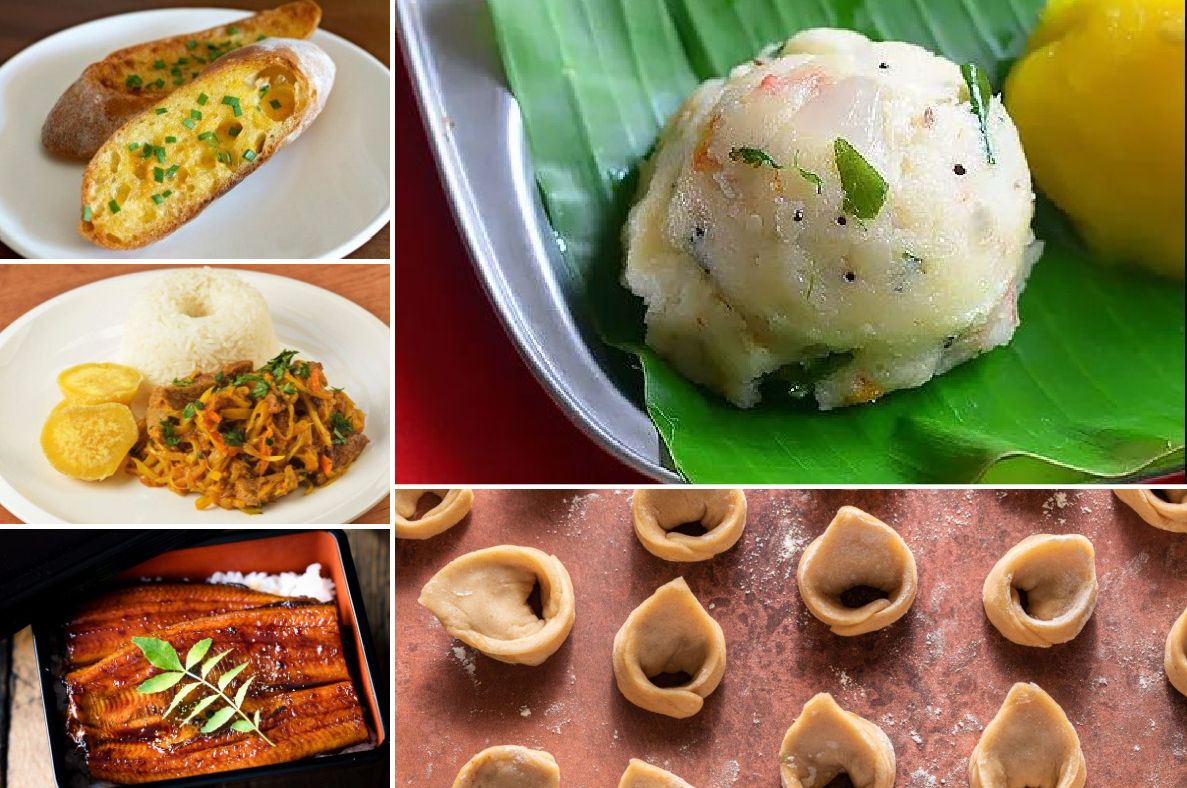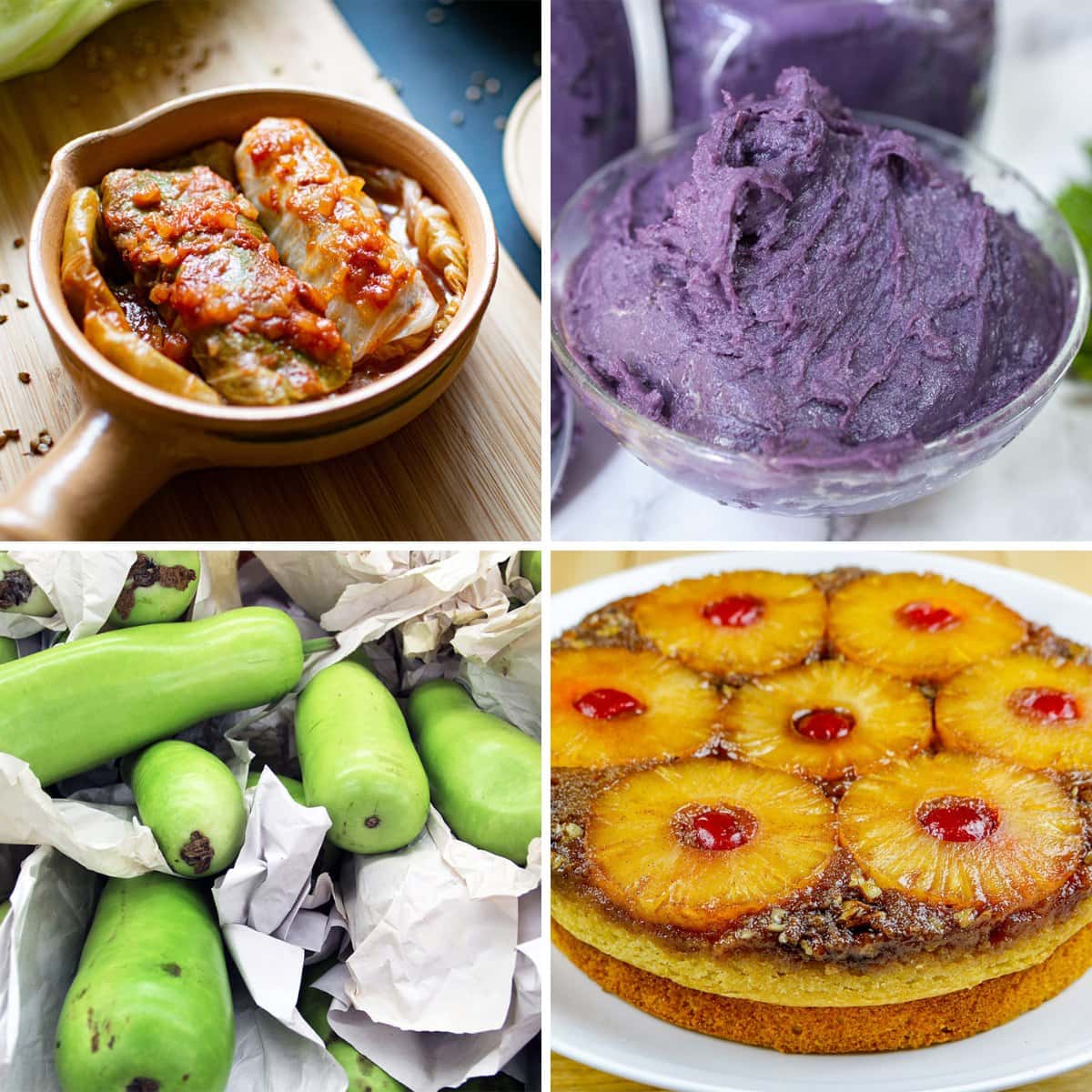The letter U may seem challenging for foods, yet across the globe you’ll find a rich variety of fruits, vegetables, grains, seafood, breads, condiments and desserts beginning with “U”. This guide presents them in structured categories, provides context, and offers practical usage ideas to help you explore and savour these less-common culinary treasures.

Why Explore Foods That Start With U?
Exploring foods with the letter “U” helps you discover global cuisine diversity. It spotlights lesser-known items, expands ingredient awareness, and adds variety to meals. Many “U” foods carry unique flavour profiles or cultural significance. By knowing them you broaden culinary horizons.
Key Categories of “U” Foods
1. Fruits
Here are several fruits whose name begins with “U”.
-
Ugli fruit – A hybrid citrus from Jamaica. It features a thick, rough yellow-green rind and sweet-tart flesh.
-
Umbu fruit – A Brazilian fruit from the semi-arid northeast; juicy pulp, mild sourness.
-
Ube (purple yam) – A Filipino violet-coloured yam often used in desserts.
-
Ulluco – A tuber from the Andes with translucent-skin and firm flesh; used like a root vegetable.
2. Vegetables & Legumes
-
Urad dal (black gram) – A South Asian legume (Vigna mungo) high in protein and used in dals, dosas, idlis.
-
Udo – Japanese mountain asparagus (Aralia cordata); crisp stems, mild herbal flavour, used in salads or stir-fry.
-
Upma – Though a dish rather than an individual vegetable, the name “Upma” begins with U and it is a savoury semolina or rice-flour breakfast from South India.
3. Staples, Grains & Pasta
-
Udon – Thick wheat-flour noodles from Japan; served hot in broth or cold with dipping sauce.
-
Ugali – A staple maize-meal porridge in East and Southern Africa.
-
Umbricelli – Rare pasta variety (sometimes listed under “U”) used like spaghetti or vermicelli.
4. Seafood & Proteins
-
Unagi – Freshwater eel in Japanese cuisine; typically grilled with sweet-soy glaze.
-
Uni – Edible gonads of sea urchins; rich, creamy texture and briny ocean-flavour.
-
Ugba – A fermented oil-bean seed dish from West Africa; tangy, spicy, used as side or relish.
5. Breads, Snacks & Savoury Treats
-
Uszka – Polish small dumplings filled with mushrooms or onions, often served in beet soup at Christmas.
-
Ukrainian dinner rolls – Traditional bread rolls in Ukrainian cuisine, beginning with U in some lists.
-
Upside-down cake (though starts with U by name) – A classic dessert baked with fruit at the bottom and inverted before serving.
-
Unsweetened chocolate – Pure cocoa mass; starts with U and used in baking or cooking rather than as a treat.
6. Condiments, Spices & Sauces
-
Urfa biber – A dried Turkish chili pepper with smoky, raisin-like flavour; used to add depth to Middle Eastern dishes.
-
Umeboshi – Japanese salted/pickled plum with intensely sour-salty taste; served with rice or used as seasoning.
-
Urap – Indonesian vegetable salad (often greens) mixed with spiced coconut; begins with U and shows up on “U”-food lists.
7. Desserts & Sweets
-
Ube halaya – Filipino sweet pudding made from mashed ube (purple yam), coconut milk and condensed milk.
-
Upside-down pineapple cake – A version of upside-down cake, “U” in name, reversed pineapple topping.
-
U-No Bar – A candy bar brand starting with U; sometimes included in broad lists of U-foods.
-
Umbuzada – A Brazilian beverage made from umbu fruit, sugar and milk; fits the “U” category of drinks.
Top 10 “U” Foods You Should Try
-
Ube (purple yam)
-
Ugli fruit
-
Udon noodles
-
Ugali
-
Urad dal
-
Unagi
-
Uni
-
Urfa biber
-
Uszka
-
Ube halaya
Unusual or Lesser-Known “U” Foods
-
Umbu fruit
-
Ulluco tuber
-
Udo (mountain asparagus)
-
Umbricelli pasta
-
Ugba (fermented oil-bean seeds)
-
Ukrainian dinner rolls
-
Urap (Indonesian spiced coconut salad)
-
Umbuzada
-
U-No Bar (snack brand)
-
Unsweetened chocolate (ingredient rather than treat)
Key “U” Foods at a Glance
| Food | Region of Origin | Primary Flavour Profile | Typical Use |
|---|---|---|---|
| Ube | Philippines | Sweet, nutty, vanilla-hints | Desserts, bread, ice cream |
| Ugli fruit | Jamaica | Sweet-tart citrus | Fresh eating, salads, juice |
| Udon noodles | Japan | Mild wheat, chewy | Hot broths, stir-fry |
| Ugali | East/Southern Africa | Neutral, starchy | Staple accompaniment to stews |
| Urad dal | South Asia | Earthy legume | Dal, idli/dosa batter |
| Unagi | Japan | Rich, grilled-sweet soy glaze | Sushi, rice bowls |
| Uni | Global (sea urchin roe) | Briny, creamy | Sushi, pasta topping |
| Urfa biber | Turkey | Smoky, raisin-like heat | Spice rub, seasoning |
| Uszka | Poland | Savoury mushroom/onion filling | Dumplings in soup |
| Ube halaya | Philippines | Sweet, creamy | Dessert pudding, bread topping |
How to Explore & Use “U” Foods in Your Kitchen
-
Combine a “U” fruit with a standard dessert: use ugli fruit in tart or sorbet.
-
Replace a staple starch in a global dish: use ugali or ube in place of potato or rice.
-
Introduce a novel protein: try unagi or uni once to experience a distinct texture.
-
Add spice dimension: sprinkle urfa biber on roasted vegetables or steak.
-
Create themed meals: have a “U-letter” night featuring udon, urad dal, ube halaya.
-
Source wisely: many “U” foods are niche—check specialty grocers, Asian or African markets.
FAQs
Q1. Why are foods starting with “U” so rare?
Because in many languages and cuisines the letter “U” is less common as the initial letter for ingredient names. Also, globalization tends to favour more familiar letters.
Q2. Are “U” foods healthy?
Many definitely are—for example urad dal is rich in protein and minerals. Fruit-based “U” items like ugli fruit deliver vitamin C. Staple items like ugali supply energy.
Q3. What is the best “U” food to start with for beginners?
Udon noodles are widely available and familiar in flavour; they make a good entry point.
Q4. How do I cook ugali properly?
Boil maize meal in water, stir until it becomes firm and dough-like. It is then served as accompaniment to stews or vegetables.
Q5. Can “U” foods be used in fusion cuisine?
Yes—they lend novelty. For instance, use ube in cheesecake, or urfa biber in a chili rub for grilled chicken.
Q6. Are there desserts beginning with “U”?
Yes: ube halaya (Philippines), upside-down cake, umbuzada (drink) etc.
Q7. Where can I buy less-common “U” foods like umb u fruit or udo?
Specialty international grocers, farmers’ markets, or online ethnic-food vendors are good places.
Q8. Are there vegetarian “U” foods suitable for plant-based diets?
Certainly: ube, ugli fruit, urad dal (when cooked without animal products), udo and urfa biber spice.
Q9. Do “U” foods have cultural significance?
Yes—for example, ugali is a staple in East Africa and plays a central role in meals across Kenya, Tanzania and more.
Q10. How many “U” foods exist globally?
Extensive lists exist (100 + items in some compilations). The Coconut Mama This article covers a curated selection rather than every possible item.
Learn More: Does Chai Have Caffeine?
How to Bake Lasagna: Time, Temperature, and Technique
Conclusion
Exploring foods that start with u opens a door to global flavours and lesser-known ingredients. From the vivid purple hue of ube, to the chewy comfort of udon noodles, to the smoky heat of urfa biber spice, each item brings its own character. Use the lists, table and FAQ in this guide to experiment, broaden your shopping list, impress guests with novelty, and bring fresh interest to your cooking repertoire.

